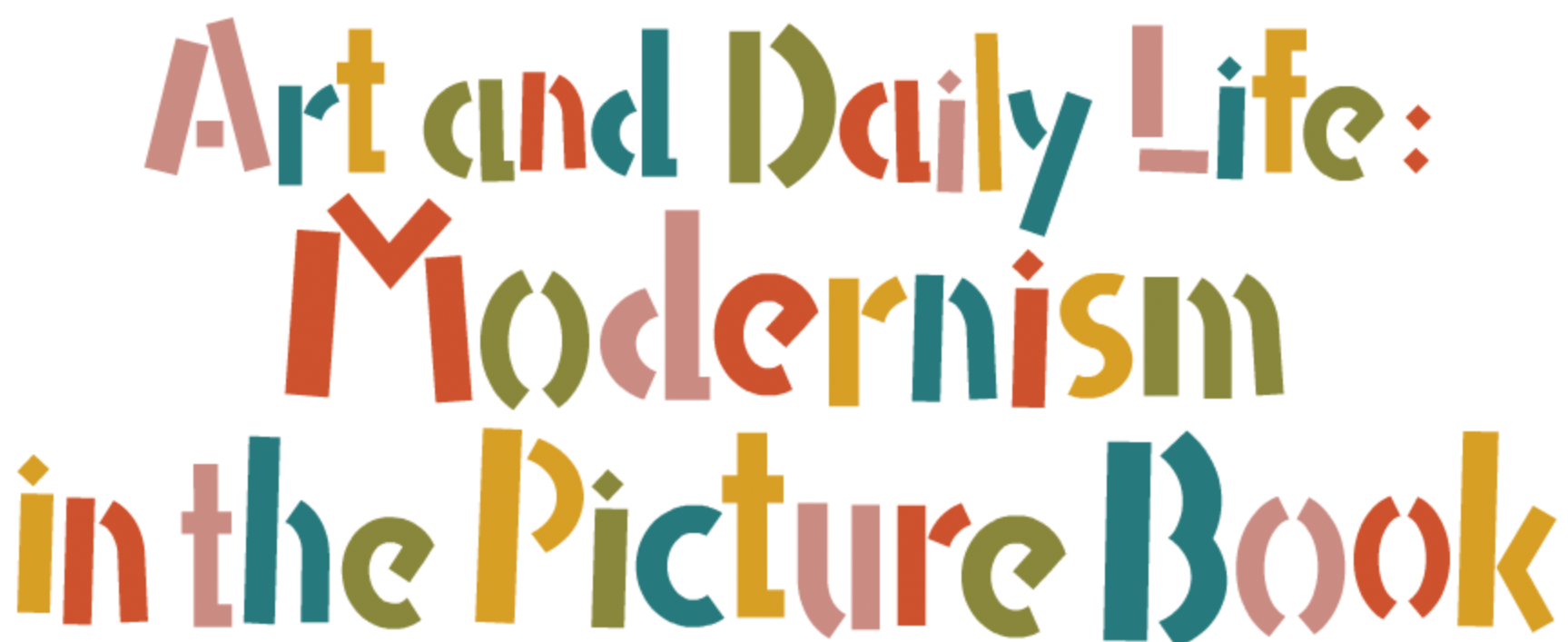本文
Bibliography

My Ball
Мяч
OGIZ; Leningrad.
1934,
10 pages.
195x147 mm.
© by permission of Aleksandr Marshak, Iakov Marshak, and Elen Pakhomova
We thank Mr.Aleksandr Marshak, Mr. Iakov Marshak, and Ms. Elen Pakhomova for giving permission to use My Ball.
1/13
My Ball

2/13 Push an image to enlarge
(♪) My ball. By Samuil Marshak. Illustrated by Aleksei Fedorovich Pakhomov.
My Ball
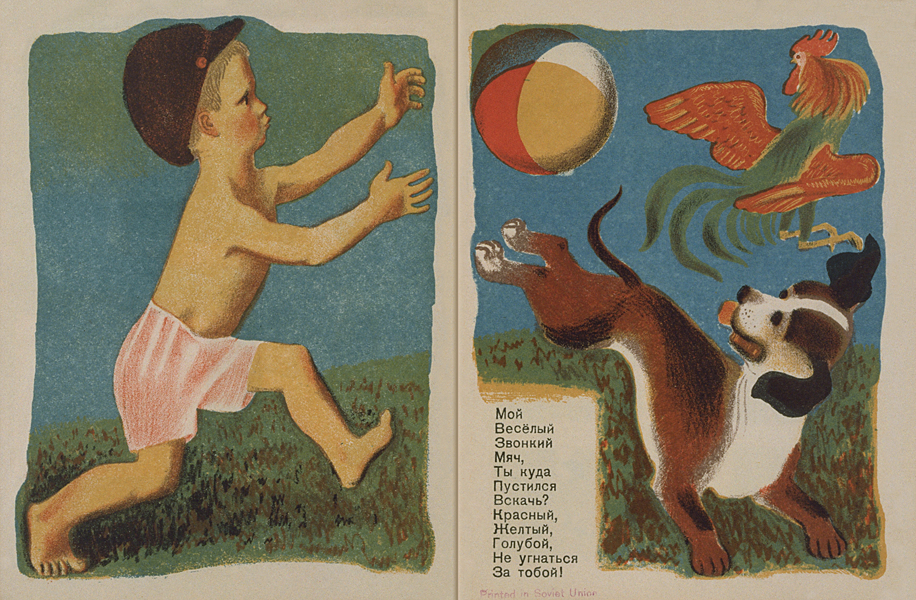
3/13 Push an image to enlarge
(♪) Happily bouncing, that’s my ball where on earth are you going? Red, yellow and blue, you are. Wait! I can hardly keep up with you!
My Ball
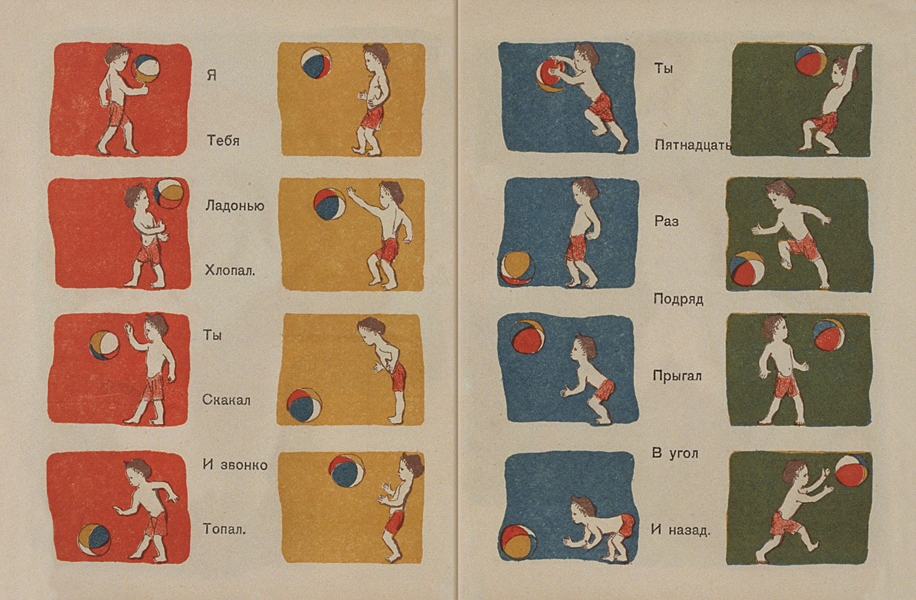
4/13 Push an image to enlarge
(♪) I caught you on my hand. (♪) You flew up and landed with a nice bounce.
(♪) Fifteen times you bounced without stopping. (♪) Rolled into the corner and rolled back to me.
(♪) Fifteen times you bounced without stopping. (♪) Rolled into the corner and rolled back to me.
My Ball
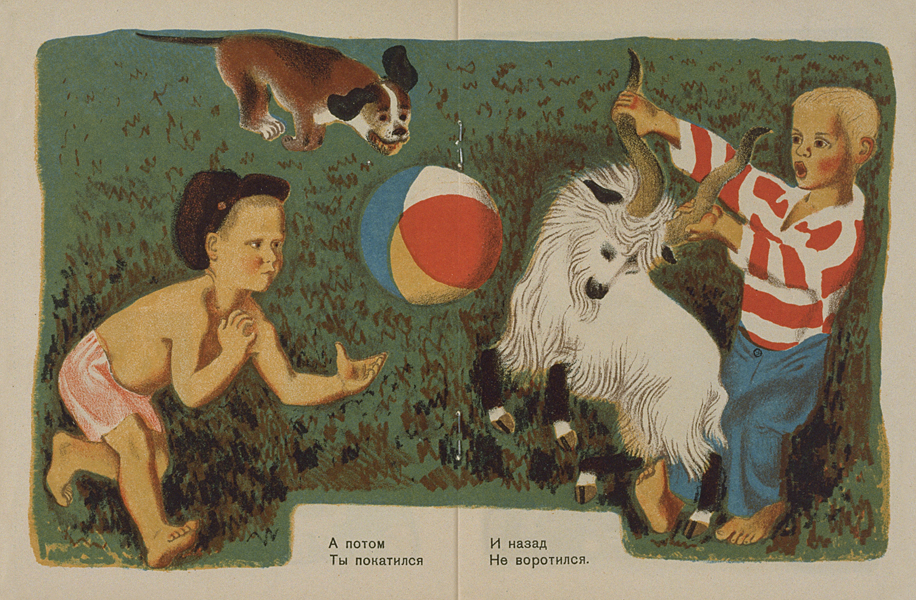
5/13 Push an image to enlarge
(♪) Then after that you started rolling, rolling...
And you didn’t come back to me.
And you didn’t come back to me.
My Ball
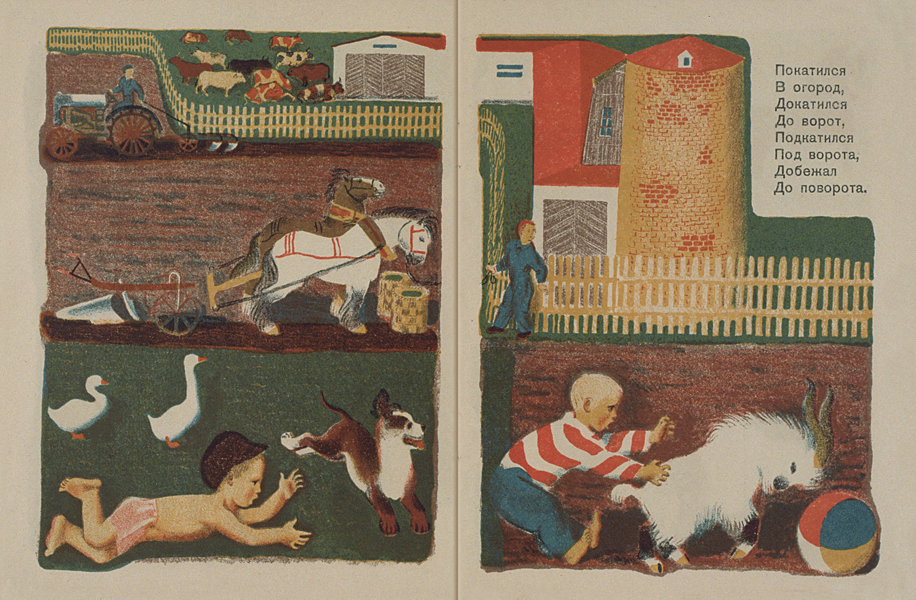
6/13 Push an image to enlarge
(♪) You rolled toward the field, and when you got to the gate, you rolled right through, and came to the street corner.
My Ball
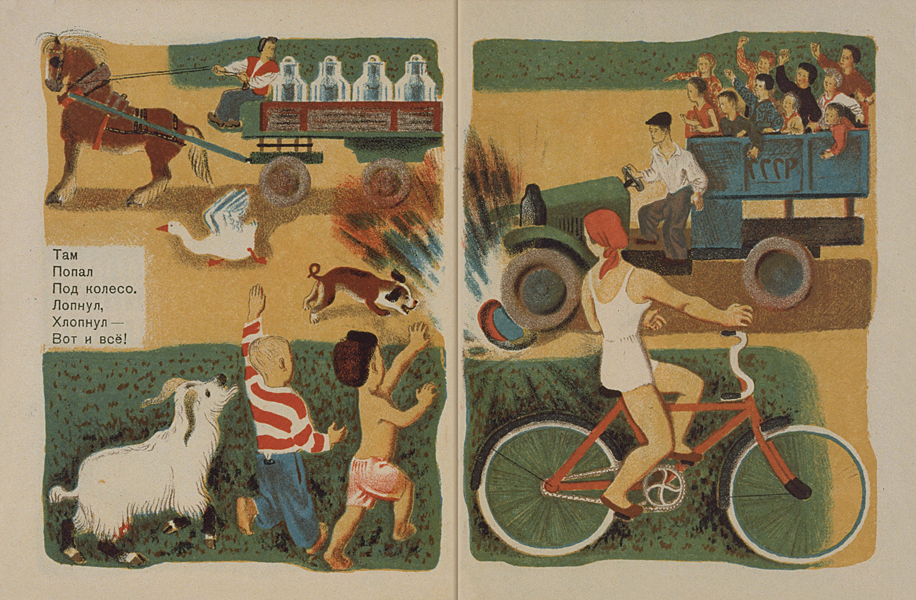
7/13 Push an image to enlarge
(♪) And there, you were run over by a car with a terrific noise. My ball exploded. And that’s the end of my story!
No narration on page 8
My Ball

8/13 Push an image to enlarge
No narration on page 9
About the author 1/4
By Samuil Marshak (1887–1964)
Pictures by Aleksei Pakhomov (1900–1973)\
1)
After the Russian Revolution and the establishment of the Union of Soviet Socialist Republics in 1917, the process began of creating a literature for the young people who would be the future leaders of the new country. Samuil Marshak put out many works of poetry, plays for children, and translations, together with Maksim Gorkii and Kornei Chukhovskii playing a leading role in establishing the foundations of Soviet children’s literature.Born in Veronezh, a southern part of Moscow as the son of a poor Jewish factory craftsman, Marshak began writing poetry early in life, and his talent was eventually discovered by the well-known critic Vladimir Stasov, who introduced him to Gorkii, opening up for him the path into literature. He went to study at the University of London when he was twenty-five.
9/13
No narration on page 10
About the author 2/4
2)
After the Revolution of 1917 Marshak founded a children’s village for war orphans as well as a children’s theater. His first works of children’s literature were plays. In 1922 he organized the children’s literature studio in Leningrad (St. Peterburg) and trained many writers. In 1924 he became the head of the state publishing house Gozidat and, at the first Soviet Writers Congress (Sezd Sovetchikh Pisatelei) in 1934, presented a special report titled “Bol’shaya literature dlya malen’kikh” (Great Literature for Little People).Marshak’s poetry is bright, simple, clear and humorous. Many of his works have been favored and reprinted. He is well known in Japan also for his play for children “Twelve Months” and the Slav story “Dvenadtsat’ mesyatsev Slavyanskaya skazka,” which is known under its Japanese title “Mori wa ikite iru” (The Forest Is Alive).
10/13
No narration on page 11
About the author 3/4
3)
Illustrator Pakhomov became an active and well-known painter and picture book artist in the golden era of Soviet picture books in the early 1920s. The son of a farmer in Varlamovo of northern European Russia, he gained the support of a philanthropist enabling him to go to St. Petersburg and study at the VKHUTEMAS (Academy of Advanced Art and Craft). His paintings and lithographs took up the theme of the new life of the Soviet Union. He was active as an illustrator for state publishing house Gozidat and for children’s magazines from 1925. He is known as the illustrator of Marshak’s Master-lomaster [Master Breaker] 1930 and Myach (Ball) 1934, and of Maiakovskii’s Kem byt (What Do You Want To Be When You Grow Up?; 1950-1953), Philip Tolstoy’s anthology of short stories Filipok (Philip the Little; 1955), and many others. In Japan his Babushka, vnuchka da kurochka [The Old Woman, the Granddaughter, and the Hen] was published as Ringo kororin [The Rolling Apple].
11/13
No narration on page 12
About the author 4/4
4)
Ball exhibits Pakhomov’s warm and poetic style, and the figure of the boy projects a lively and memorable presence. The dynamic movements of the boy playing with the ball enhance the simple rhythms of Marshak’s verse. Pakhomov also introduces here the lives of Soviet farmers, probably as a natural consequence of the intent of these early children’s books to show what the newly born nation was trying to achieve.
12/13
Contents
13/13
